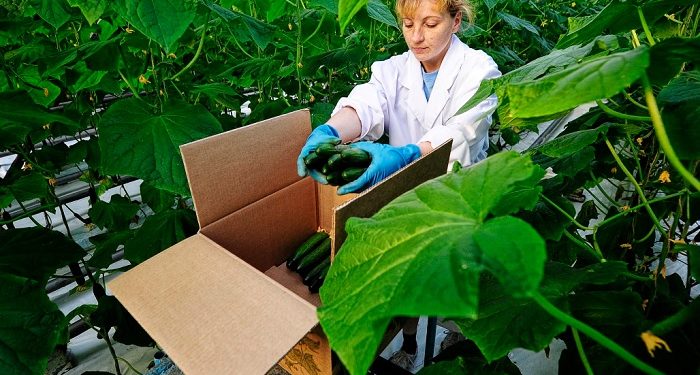The sanctions did not slow down the development of the greenhouse vegetable growing industry, but they seriously hit the rise in prices for raw materials and fertilizers, which will affect the cost of production, according to southern vegetable growers.
The production of greenhouse vegetables in Russia is growing steadily – according to the forecast of the Ministry of Agriculture of the Russian Federation, by the end of 2022, the positive dynamics will continue, and the harvest will be about 1.5 million tons, which is 7% more than a year earlier. This will update last year’s record.
According to the results of the first quarter, according to the Ministry of Agriculture, 447 thousand tons of vegetables and green crops (+4.9%) were grown in Russian winter greenhouses. The harvest of greenhouse cucumbers amounted to 279.1 thousand tons (+1.8%), tomatoes – 158.4 thousand tons (+10.8%). Last year, the harvest updated the record of 2020 – more than 1.4 million tons of products were received. It is expected that by 2025 the volume of vegetable production in year-round greenhouses will be at least 1.6 million tons of vegetables.
Previously, Expert Yug talked about the most notable greenhouse projects in the South.
How we stopped being dependent on imports
The intensive development of greenhouse projects in our country helps to provide Russians with fresh vegetables all year round, notes Tamara Reshetnikova, general director of the research company Growth Technologies.
“Modern greenhouse vegetable growing in Russia began to develop rapidly after the introduction of the food embargo in 2014, which became our response to US and EU sanctions. Until that moment, imports prevailed in our country – annually we imported about one million tons of vegetables with a short shelf life from Turkey, Iran and other countries. That almost doubled the volume of its own production. The embargo led to a significant decrease in imports, but the state quickly found its bearings in the new conditions and developed measures that aroused investors’ interest in the greenhouse industry,” says Tamara Reshetnikova.
According to the Ministry of Agriculture of the Russian Federation, over the past five years, about 1.5 thousand hectares of greenhouse complexes have been commissioned and modernized in Russia. Last year their total area increased by 10%. More than 400 farms are currently operating in the country. More than 50 objects are under construction. The leaders among the regions for the production of vegetables in winter greenhouses are the Lipetsk, Moscow, Kaluga, Volgograd, Novosibirsk, Saratov, Chelyabinsk regions, the Krasnodar and Stavropol Territories, the Republics of Bashkortostan and Tatarstan, the Karachay-Cherkess Republic. They account for more than 60% of the total production in the country. The ministry also notes that the development of greenhouse vegetable growing remains one of the priority areas in the agricultural sector.
Preferential investment loans and “stimulating” subsidies are provided for industry enterprises. In addition, a new mechanism for compensating part of the costs for the construction of greenhouse enterprises in the regions of the Far East has been operating since this year, the press service of the Ministry of Agriculture of the Russian Federation said.
According to Maria Bocharova, First Vice President of the ECO-Culture Agricultural Holding, in recent years the industry has made a significant contribution to ensuring food security in Russia. The volume of grown products is increasing every year, the volume of imports is decreasing every year.
“Our country already provides itself with cucumbers almost completely, by 95%, with tomatoes – by about two-thirds. The increase in production volumes is ensured both by commissioning new areas and by increasing yields. Of course, the rapid development of the industry is ensured thanks to the systemic support of the state, and if this situation continues, then in the next few years our country will be able to fully meet its needs in cucumbers and tomatoes,” says Maria Bocharova.
Southern vegetable growers see the problem in rising costs.
Greenhouse vegetable growers in the South are now forced to quickly adapt to the current environment.











